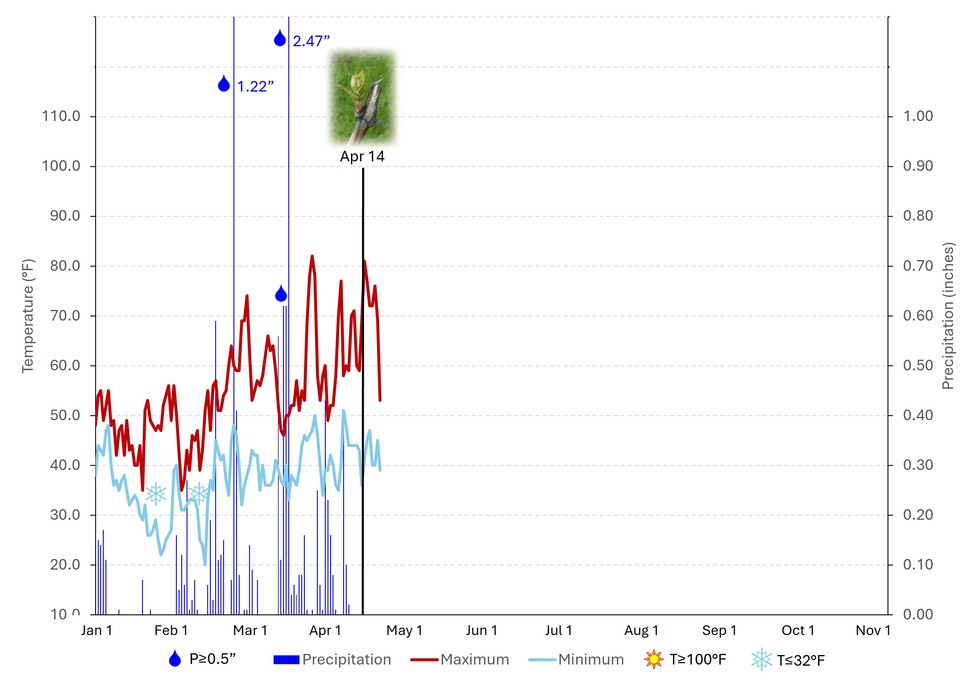Abacela Vintage 2025 – Bud Break
Weather and Climate
The winter of 2024-2025 was largely warmer than normal over the western US with temperatures mostly 0.2 to 3.0 degrees above the average during 1991-2020. A few areas across northern California, southwest Idaho, the central Cascades in Oregon, and northern Cascades in Washington experienced a winter that was near average to 1.2 degrees below average. In terms of precipitation, a north-south dipole was experienced where most of the northern California into the PNW saw 110-150% of normal amounts, while southern California and the southwest experienced 0-70% of normal amounts.
For the Umpqua Valley, the winter was slightly warmer than average (0.2-0.7 degrees). The winter months varied tremendously in terms of precipitation with November and December being wetter than average, January and February drier than average, and March significantly wetter than average. The result was a very wet winter for the region (6-9 inches above average).
Since the first of the year Abacela has experienced nearly 12 inches of rain (Figure 1), with record amounts occurring in late February and during March 15-17 when significant flooding happened throughout the region. Temperatures at Abacela were colder than average in January and February dipping into the lower 20s. A relatively warm March with temperatures reaching into the upper 70s and lower 80s followed by a warm early April led to bud break and the start of our growing season at Abacela.
Phenology
Abacela tracks phenology, important grapevine growth stages, by block and variety each year. The longest term data that we have comes from eleven variety/block combinations which include Tempranillo, Syrah, Malbec, Merlot, and Albariño. These observations started in 1997 for Tempranillo and Syrah with the others added to the observations over time with all eleven combinations observed since 2010.
The 2025 bud break at Abacela started with Albariño on April 8th and averaged April 14th across our varieties (Figure 1). The start of the vintage in 2025 is five days later than our long-term average of April 9th even though temperatures have been warmer than average. We believe this was largely because of how wet March was, leaving the soils cooler than average and delaying bud break slightly.
 Figure 1 – Weather and phenological observations for Abacela from January through late April 2025. Daily maximum and minimum temperatures are shown in red and light blue, respectively, with extremes of days over 100°F or below 32°F indicated by the sun and ice crystal symbols. Daily precipitation is in a darker blue bar with days receiving greater than 0.5” of rain indicated with a raindrop. The weather data comes from our main weather station on Cobblestone Hill. The phenological events and days between events come from an eleven variety/block combination of Tempranillo, Syrah, Malbec, Merlot, and Albariño.
Figure 1 – Weather and phenological observations for Abacela from January through late April 2025. Daily maximum and minimum temperatures are shown in red and light blue, respectively, with extremes of days over 100°F or below 32°F indicated by the sun and ice crystal symbols. Daily precipitation is in a darker blue bar with days receiving greater than 0.5” of rain indicated with a raindrop. The weather data comes from our main weather station on Cobblestone Hill. The phenological events and days between events come from an eleven variety/block combination of Tempranillo, Syrah, Malbec, Merlot, and Albariño.
